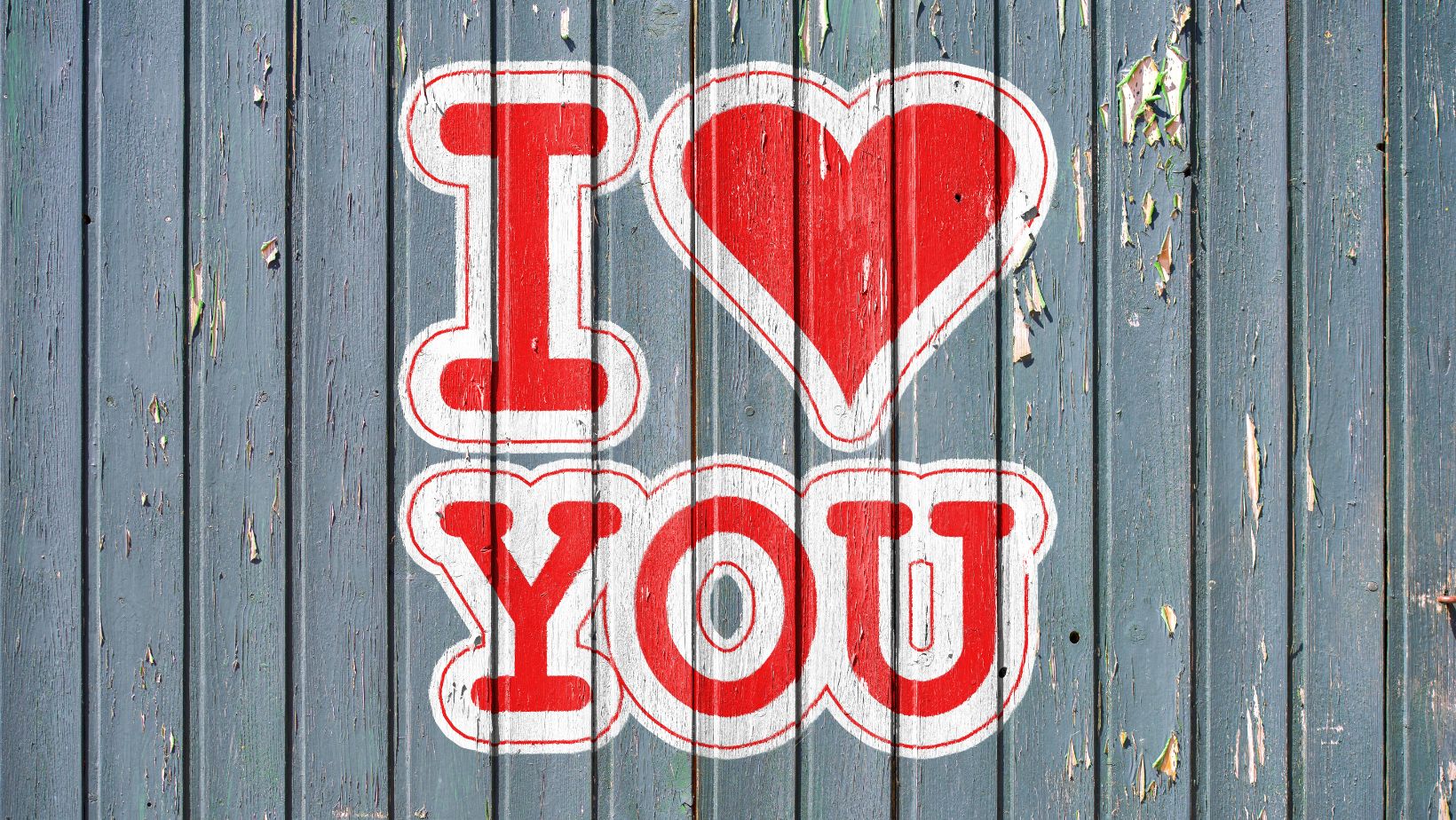In the ever-evolving landscape of internet culture, certain phrases and visuals transcend their original context to become widespread phenomena. One such viral sensation that has captivated millions across social media platforms is the "I love your daughter" meme. This seemingly simple yet profoundly versatile trend has sparked countless hilarious, heartwarming, and often deeply relatable videos, solidifying its place in the digital lexicon.
From its humble beginnings in a beloved television series to its explosive popularity on TikTok, the journey of the "I love your daughter" meme is a fascinating case study in how niche content can achieve global recognition. This article delves deep into the origins of this iconic dialogue, traces its transformation into a viral trend, explores its multifaceted interpretations, and examines the broader cultural impact it has had on online communities and beyond, ensuring a comprehensive understanding of this unique internet sensation.
Table of Contents
- The Unexpected Origin Story: Gilmore Girls and Kirk's Unforgettable Line
- Sean Gunn: The Man Behind the Memorable Dialogue
- From Niche Clip to TikTok Sensation: The "I Love Your Daughter" Trend Takes Over
- The "What Do You Have to Offer Her?" Dilemma: Unpacking the Meme's Core
- Creative Spins and Celebrity Endorsements: How TikTokers Made It Their Own
- The Cultural Resonance of "I Love Your Daughter": Humor, Relatability, and Connection
- Beyond TikTok: The Meme's Presence in Gifs and Other Digital Spaces
- Daughter's Day and the Enduring Appeal of Daughter-Themed Content
The Unexpected Origin Story: Gilmore Girls and Kirk's Unforgettable Line
The genesis of the "I love your daughter" meme can be traced back to a seemingly innocuous scene from the popular television series, Gilmore Girls. Specifically, the dialogue that forms the bedrock of this viral trend first aired on **April 30th, 2002**, in the 19th episode of its second season, titled "Lorelai's Graduation Day." This particular episode holds a special place in the hearts of many fans, not just for its plot developments but for introducing one of the show's most memorable and unexpectedly influential moments.
In this episode, the eccentric and often peculiar character of Kirk Gleason, played by the talented Sean Gunn, presents a short film he created to the town. This film, aptly titled "A Film by Kirk," is a surreal and utterly unique piece of cinema within the show's narrative. It features a pivotal moment where Kirk's character, with his signature earnestness and awkward charm, utters the now-iconic line: "I love your daughter." This declaration is met with the immediate and challenging retort from another character: "What do you have to offer her?" This exchange, delivered with a blend of sincerity and quirky humor, was originally a standout, albeit niche, moment for fans of the show. It was a classic Kirk moment – slightly out of left field, endearing, and memorable. Little did anyone involved in its creation know, this specific dialogue would one day become the foundational audio for a global internet phenomenon, demonstrating the unpredictable nature of viral content. The scene, often described as a "Lynchian clip" due to its surreal and dreamlike quality, possessed a unique, slightly unsettling yet captivating charm that, when isolated, proved perfectly ripe for comedic and emotional reinterpretation across new digital platforms.
Sean Gunn: The Man Behind the Memorable Dialogue
At the heart of the "I love your daughter" meme's origin is actor Sean Gunn, whose portrayal of Kirk Gleason in Gilmore Girls provided the original audio and visual foundation. While the meme's popularity has soared independently, often detached from its source for new audiences, understanding Gunn's contribution adds a layer of appreciation for its roots and the unique character he brought to life.
Sean Gunn is an accomplished American actor known for a diverse range of roles that showcase his versatility. He gained widespread recognition for his portrayal of Kirk Gleason in the beloved WB/CW series Gilmore Girls (2000–2007) and later reprised the role in its highly anticipated Netflix revival, Gilmore Girls: A Year in the Life (2016). Beyond Stars Hollow, Gunn has achieved significant fame within the Marvel Cinematic Universe, where he plays Kraglin Obfonteri, a member of the Ravagers, appearing in blockbusters such as Guardians of the Galaxy (2014), Guardians of the Galaxy Vol. 2 (2017), Avengers: Endgame (2019), Thor: Love and Thunder (2022), and Guardians of the Galaxy Vol. 3 (2023). He is also notable for being the younger brother of renowned director James Gunn and actor Patrick Gunn, highlighting a family legacy in the entertainment industry.
Personal Data & Biodata
| Full Name | Sean Gunn |
| Date of Birth | May 22, 1974 |
| Place of Birth | St. Louis, Missouri, U.S. |
| Occupation | Actor |
| Known For | Kirk Gleason in Gilmore Girls, Kraglin Obfonteri in MCU's Guardians of the Galaxy series |
| Siblings | James Gunn (director), Patrick Gunn (actor/producer), Brian Gunn (writer), Matt Gunn (writer) |
Gunn's distinctive acting style, particularly his ability to imbue Kirk with a unique blend of innocence, eccentricity, and earnestness, made his characters, including the one in "A Film by Kirk," particularly endearing and memorable. This authenticity and peculiar charm are key factors in why the "I love your daughter" dialogue resonated so strongly years later, providing a genuine, if slightly offbeat, foundation for the viral meme. His performance gave the line a specific, quirky delivery that proved perfect for recontextualization in the fast-paced world of internet trends.
From Niche Clip to TikTok Sensation: The "I Love Your Daughter" Trend Takes Over
The journey of the "I love your daughter" dialogue from a beloved TV show moment to a global TikTok trend is a powerful testament to the platform's unique ability to discover, amplify, and recontextualize content. The viral craze truly exploded when users began pairing the original audio clip with creative visual interpretations, transforming a simple dialogue into a dynamic performance piece. A significant catalyst for this surge in popularity was the incorporation of Olly Alexander’s song “Breathe” (from his Years & Years project) as an underlying track. This addition provided a dramatic, often melancholic, or intensely emotional layer to the visual content, elevating the meme beyond mere comedy and allowing for a broader range of expressions.
TikTokers, known for their innovative spins on established trends, quickly adopted the "I love your daughter" sound. The format typically involves a creator stating their "I love your daughter" declaration, often miming the original dialogue, followed by a visual demonstration of "what they have to offer her." This "offering" can range from genuinely impressive skills, possessions, or life achievements to hilariously mundane, absurd, or self-deprecating contributions, making the trend incredibly versatile and adaptable to various comedic or heartfelt scenarios. The creativity involved in these "offers" is what truly fuels the trend's longevity and appeal.
The trend's organic growth is evident in its immense reach and engagement. For instance, TikTok user Austin Pepito garnered over **43 million views** for his unique take on the trend, showcasing the immense potential for virality and widespread interaction that this particular meme possesses. This widespread adoption highlights how a simple audio clip can inspire a vast array of creative expressions, turning the "I love your daughter" trend into a true internet phenomenon that continues to evolve with each new interpretation.
The "What Do You Have to Offer Her?" Dilemma: Unpacking the Meme's Core
At the very heart of the "I love your daughter" meme lies the critical second part of the dialogue: "What do you have to offer her?" This question transforms a simple declaration of affection into a challenging query, prompting creators to showcase their worth in a humorous, self-deprecating, or genuinely impressive manner. This duality – the declaration followed by the justification – is precisely what gives the meme its depth, versatility, and widespread appeal, making it more than just a fleeting soundbite.
The "offer" can be interpreted in countless ways, reflecting the creator's personality, their current life situation, and the intended tone of their video. Some users present their financial stability, their well-maintained home, their impressive career achievements, or their responsible nature. These often lean into a more serious or aspirational interpretation of the meme. Conversely, many creators lean heavily into the comedic aspect, offering things like their ability to make instant noodles, their extensive collection of obscure video games, their questionable dance moves, or their chaotic but lovable lifestyle. This flexibility allows the trend to be both aspirational and deeply relatable, as people can either boast about their best qualities or playfully poke fun at their own shortcomings, creating a wide spectrum of content.
The brilliance of the "I love your daughter" trend lies in this interactive and introspective element. It's not just about declaring love; it's about playfully, or sometimes genuinely, justifying that love with tangible or intangible "offerings." This concept taps into a universal human experience: the desire to prove oneself worthy, whether in a romantic context, a professional one, or simply for comedic effect. It turns the meme into a playful self-assessment, inviting viewers to consider what they, too, might "offer" in a similar scenario, fostering engagement and relatability across diverse audiences.
Creative Spins and Celebrity Endorsements: How TikTokers Made It Their Own
One of the defining characteristics of a truly successful TikTok trend is its inherent adaptability, and the "I love your daughter" meme exemplifies this perfectly. TikTokers have consistently put their own unique spins on the trend, ensuring its longevity and widespread appeal far beyond its initial virality. From intricate dance routines to elaborate skits and clever visual gags, the sheer creativity unleashed by this simple dialogue has been remarkable, making each video a fresh take on the core concept.
For example, the trend has seen various dance interpretations. Celebrities like Brian Jordan Alvarez have enthusiastically shown off their "funky dance moves" in a direct callback to the iconic


